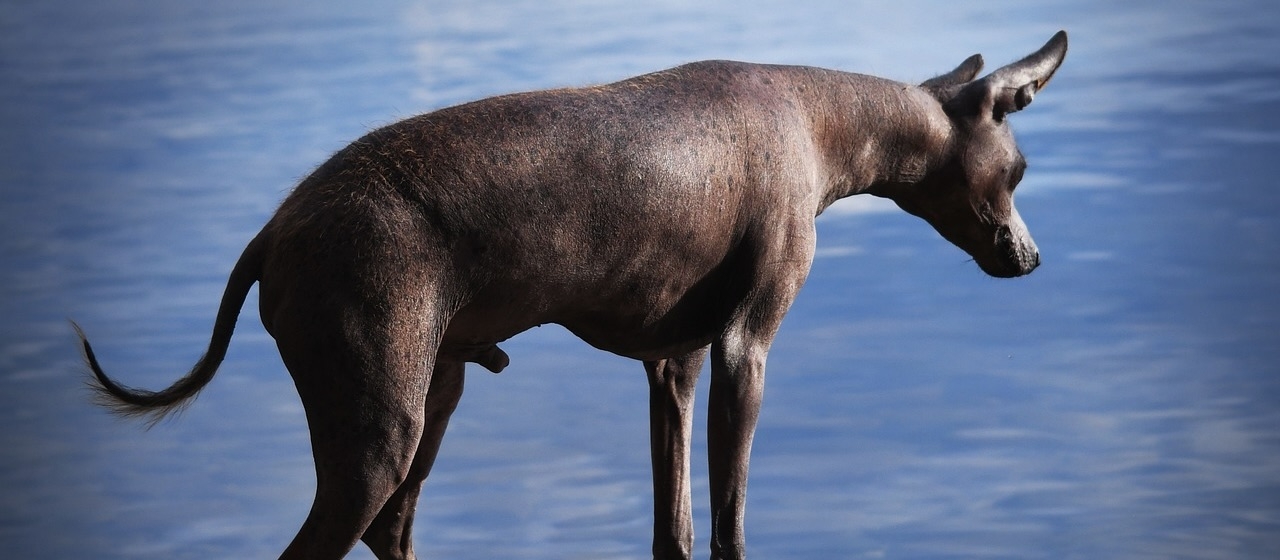Imagine a creature that strikes fear into the hearts of farmers and livestock owners alike – the Chupacabra. This elusive creature, known for its blood-sucking tendencies, has become the stuff of legends in many Latin American countries. Described as a combination of a vampire and a reptile, the Chupacabra has sparked countless sightings and debates. In this article, we will explore the origins, sightings, and possible explanations behind this mysterious creature. Get ready to uncover the truth behind the Chupacabra phenomenon!

This image is property of cdn.britannica.com.
Overview
Welcome to the fascinating world of the Chupacabra! This mythical creature has sparked the curiosity and imagination of people all over the world. Known for its bloodsucking abilities and mysterious origins, the Chupacabra has become a prominent figure in folklore and popular culture. Throughout this article, we will explore the intriguing history, physical description, characteristics, investigations, scientific explanations, cultural impact, and the ongoing debate about whether the Chupacabra is just a myth or a real creature.
Origin and Folklore
Early Sightings
The first recorded sightings of the Chupacabra date back to the late 20th century in Puerto Rico. Local farmers reported finding their livestock mysteriously drained of blood, with puncture marks on their bodies. This led to the initial belief that a creature with supernatural abilities was responsible for these incidents. Eyewitness accounts described a creature with a reptilian appearance, large red eyes, and sharp fangs. These early sightings would lay the foundation for the legend of the Chupacabra.
Puerto Rico Incidents
Throughout the 1990s, reports of Chupacabra sightings in Puerto Rico continued to increase. The creature allegedly attacked and killed various animals, leaving behind lifeless bodies drained of blood. This sparked fear and panic among the local communities, as the Chupacabra became associated with death and destruction. People started taking precautions to protect their livestock, setting traps and organizing search parties to catch the elusive creature.
Expansion to Mainland
As news of the Chupacabra spread, reports of similar incidents started to emerge in different parts of the world. The mainland United States became a hotbed for Chupacabra sightings, with reports coming from states like Texas, New Mexico, and Arizona. Eyewitnesses claimed to have seen a creature that matched the description of the Chupacabra, hunting and attacking farm animals. As these reports gained media attention, the legend of the Chupacabra began to capture the public’s imagination, fueling further speculation about its existence.
Global Reports
The reach of the Chupacabra legend extended beyond the Americas. Similar stories and sightings were reported in countries such as Chile, Brazil, and even Russia. Although the physical description of the creature varied, the common thread in these reports was the presence of mysterious puncture marks and drained animals. These global sightings added fuel to the debate about the Chupacabra’s existence and only intensified the quest to unravel the truth behind this enigmatic creature.
Physical Description
Describing the physical attributes of the Chupacabra is not a straightforward task, as there are various interpretations and depictions of this creature. However, one recurring theme in eyewitness accounts is its reptilian appearance. Many people describe the Chupacabra as a bipedal creature with spiky, scaly skin. Its most striking features are its large red eyes that appear to glow in the dark, a feature that instills fear in those who claim to have encountered it. Additionally, witnesses often mention its sharp fangs, which are believed to be used for piercing the skin of its prey.
Naming and Origins
The name “Chupacabra” itself reveals a lot about this creature’s characteristics. It originates from the Spanish words “chupar” and “cabra,” which translate to “suck” and “goat” respectively. This refers to the creature’s alleged bloodsucking abilities and its targeting of livestock, particularly goats. The name gained popularity quickly and became the go-to term to describe the mysterious creature responsible for the animal deaths.

This image is property of upload.wikimedia.org.
Characteristics
Bloodsucking Abilities
The Chupacabra is infamous for its ability to drain the blood from its victims. Stories and sightings consistently describe animals with puncture marks on their bodies, devoid of their life-giving fluids. This bloodsucking ability further deepens the aura of fear and mystery surrounding the Chupacabra. Some theorize that the creature uses these blood reserves as a means of sustenance, while others propose more sinister motives.
Prey Selection
While the Chupacabra is often associated with its predilection for goats, it is not exclusively limited to them. Reports over the years have described attacks on a wide range of animals, including cows, chickens, and even domestic pets. This flexibility in prey selection has led to speculation that the Chupacabra is an opportunist, targeting whatever it finds in its path.
Physical Attributes
In addition to its reptilian appearance, the Chupacabra is often described as having a generally humanoid form. Witnesses recount seeing a creature that stands on two legs, ranging from three to five feet tall. Its body is usually depicted as thin but muscular, enabling it to move swiftly and stealthily. However, due to the variety of eyewitness accounts, it is challenging to pin down a definitive physical description for the Chupacabra.
Investigations and Hoaxes
Over the years, numerous investigations have been conducted to determine the validity of Chupacabra sightings and incidents. Skeptics argue that many reports are misidentifications of known animals or elaborate hoaxes. However, others maintain that there is still a possibility that a yet-to-be-discovered creature is responsible for the Chupacabra phenomena. These investigations have involved scientific analysis, interviews with witnesses, and even the use of modern technology to gather evidence. While some investigations have resulted in possible explanations, the definitive answer regarding the existence of the Chupacabra remains elusive.

This image is property of Amazon.com.
Scientific Explanations
Predator Misidentification
One scientific explanation for Chupacabra sightings is predator misidentification. Some researchers argue that witnesses may have encountered known predators, such as coyotes or wild dogs, but attributed their actions to the mythical creature. The confusion arising from fear and poorly lit surroundings may have led to a distorted perception of the animal, resulting in the creation of the Chupacabra legend.
Hairless Animals
Another explanation put forth by scientists is the existence of hairless animals. Certain diseases or genetic conditions can cause various animals to lose their hair, giving them an unusual appearance. These hairless creatures, when seen under specific circumstances or unfamiliar lighting, could easily be mistaken for the Chupacabra. This theory suggests that eyewitness accounts might be a result of encountering these abnormal animals rather than a mythical creature.
Canine Diseases
A more recent scientific theory proposes that the Chupacabra sightings may be linked to the presence of diseases among the local canine population. Canine mange, caused by parasitic mites, can result in hair loss, emaciation, and a gaunt appearance. Some scientists speculate that the Chupacabra legends could stem from encounters with dogs afflicted by this condition. The distorted features caused by mange may contribute to the Chupacabra’s reptilian-like description.
Cultural Impact
Chupacabra in Popular Culture
The Chupacabra’s mysterious nature and fearsome reputation have made it a popular figure in various forms of popular culture. It has appeared in movies, books, video games, and even merchandise. The creature’s ability to evoke fear and intrigue has made it a compelling subject for horror enthusiasts and folklore aficionados alike. Its presence in popular culture has further propelled the legend of the Chupacabra into the realm of modern mythology, ensuring its longevity for generations to come.
Influence on Local Tourism
The Chupacabra’s fame has also had a significant impact on local tourism in areas associated with sightings or intense folklore surrounding the creature. From Puerto Rico to Puerto Vallarta, entrepreneurial locals have capitalized on the Chupacabra’s allure. Guided tours, museums, festivals, and themed attractions have popped up, catering to tourists eager to explore the mysterious world of this legendary creature. The Chupacabra has become a cultural phenomenon, attracting visitors from around the world and injecting vitality into local economies.

This image is property of www.mcgill.ca.
Cryptid or Reality?
The question of whether the Chupacabra is a cryptid or a reality continues to generate heated debates among believers, skeptics, and scientists. While evidence from sightings and incidents appears compelling, the lack of concrete physical proof makes it difficult to definitively categorize the Chupacabra as a real creature. Skeptics argue that the mythical creature is merely a product of folklore, misidentifications, and hoaxes. On the other hand, proponents of the Chupacabra’s existence highlight the prevalence and consistency of reported incidents as evidence of its real-life presence. The Chupacabra remains one of the most captivating mysteries in the world of cryptozoology.
Conclusion
The legend of the Chupacabra has captured the imaginations of people around the world, from its origins in Puerto Rico to its global reach. This mysterious creature, with its reptilian appearance and bloodsucking abilities, has become a prominent figure in folklore and popular culture. Scientific explanations offer possible rationalizations for Chupacabra sightings, ranging from predator misidentification to the existence of hairless animals or canine diseases. Despite the ongoing investigations and debates, the Chupacabra continues to thrive, influencing popular culture and even contributing to local tourism. Whether the Chupacabra is a cryptid or a figment of our collective imagination, its allure persists, leaving us with intriguing questions and an insatiable curiosity about the mysteries that still exist in the world.

This image is property of s3.amazonaws.com.

